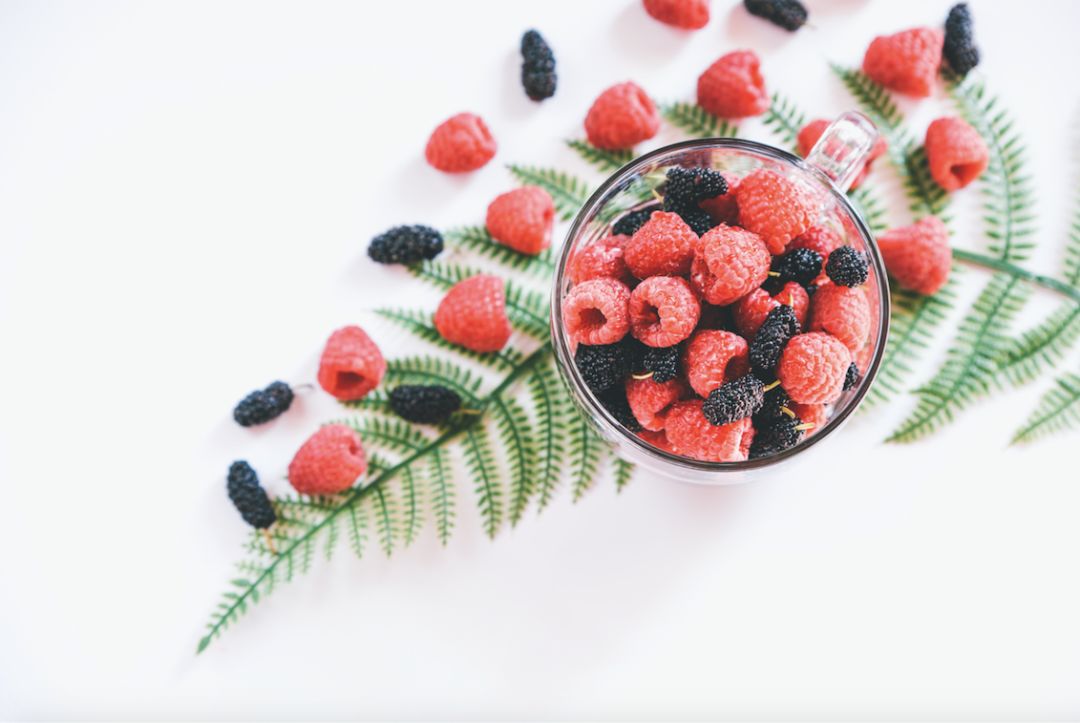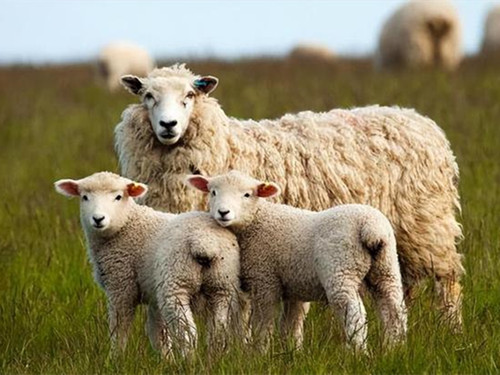Anthocyanins are colored water-soluble pigments derived from flavonol. It’s responsible for the red, purple, and blue colors of certain fruits and vegetables like berries, currants, grapes and some purplish blue-colored leafy vegetables, grains, roots, and tubers are edible vegetables that contain a high level of anthocyanins. The vivid colors serve as a defense mechanism, protecting plants from harmful environmental factors such as UV light and oxidative stress.
Anthocyanins are the glycosylated form of anthocyanidins. Scientific studies show that anthocyanidins and anthocyanins possess strong antioxidant and antimicrobial activities, and protect against various chronic diseases including cancer, cardiovascular diseases, and neurodegenerative disorders. It can supplement nutrition and eliminate harmful free radicals in the body, protect the skin from ultraviolet damage, at the same time, but also to enhance immunity, cancer prevention, resistance to radiation and many other roles. Here is the list of some foods known for their high anthocyanin content, along with approximate values for anthocyanin concentration per 100 grams:
- Black Chokeberry: Approximately 1,480 mg of anthocyanins.
- Elderberries: Around 1,300 mg of anthocyanins.
- Black Currants: About 190-270 mg of anthocyanins.
- Red Cabbage: Approximately 45 mg of anthocyanins.
- Blueberries: Roughly 120-165 mg of anthocyanins.
- Blackberries: About 60-330 mg of anthocyanins.
- Raspberries: Approximately 40-60 mg of anthocyanins.
- Tart Cherries: Roughly 25-85 mg of anthocyanins.
- Purple Grapes: Around 5-25 mg of anthocyanins.
- Blood Oranges: Approximately 2 mg of anthocyanins.
- Roselle(Hibiscus sabdariffa or sorrel): Approximately 2mg of anthocyanins.
Other natural anthocyanins like strawberry anthocyanin, raspberry anthocyanins, black rice anthocyanins, black beans anthocyanins, purple corn anthocyanin, red cabbage anthocyanin, purple sweet potato anthocyanin, purple cabbage anthocyanin, beets anthocyanins, black carrot anthocyanins which may contain in the plant from a few to 200–300 mg per 3.5 ounces (100 grams). Please note that these values are approximate and can vary based on factors such as the variety of the food, its ripeness, and growing conditions.
Health Benefits of Anthocyanins
Antioxidant effects
Anthocyanins are powerful antioxidants that neutralize free radicals in the body and reduce oxidative stress damage to cells and tissues. They help protect cells from oxidative damage and maintain cell health, which contributes to vision and skin health.
Anti-inflammatory effects
Anthocyanins have potent anti-inflammatory effects, which can help alleviate symptoms of inflammatory conditions like lung disease and may lower the risk of inflammatory-related diseases. Human nutritionists at Johns Hopkins University School of Public Health in the United States found that adding more anthocyanin-containing grapes and berries to the diet may be beneficial for lung health. Participants who ate dark fruits and vegetables rich in anthocyanins showed a slower rate of decline in lung function with age than those who ate less anthocyanin. The disparity was apparent even when other factors, such as smoking, were taken into account.
Good for the cardiovascular system
Several studies suggest that anthocyanins extract contributes to heart and brain health by improving cardiovascular function. Previous prospective studies have shown that blueberries are rich in anthocyanins, and eating more blueberries is associated with a reduced risk of diabetes and cardiovascular disease. This was confirmed by a six-month intervention trial recently published in the American Journal of Clinical Nutrition, which showed that eating 1 cup of anthocyanin-rich blueberries (about 150 grams) per day improved blood vessel function and lipid profile in patients with metabolic syndrome. They help lower blood pressure, reduce LDL cholesterol levels, and enhance blood vessel dilation, all of which contribute to a healthier heart.
Neuroprotective effects
Emerging research indicates that anthocyanins are believed to support brain health, potentially reducing the risk of age-related cognitive decline and neurodegenerative disorders such as Alzheimer’s disease. Studies have shown that anthocyanin-rich blueberry juice concentrate may enhance cognitive performance by improving brain function and cerebral blood flow in healthy elderly people, while also bringing benefits in improving brain function.
May prevent cancers
According to some research data, anthocyanins, in addition to having a strong antioxidant effect, may have an important impact on the occurrence of cancer. For example, the addition of various anthocyanins to tumor cells inhibits the growth of cancer cells and prevents the spread of tumors, leading to apoptosis of cancer cells, making them a promising area of research in cancer prevention and treatment.
The anticancer effect of anthocyanins is also related to the inhibition of neovascularization. In fact, an anthocyanin found in strawberries has been found to have anti-cancer effects by inhibiting the activity of VEGF receptors involved in angiogenesis, and this effect is related to the amount of anthocyanin in the food. There is no doubt that this activity is related to the antioxidant effect of anthocyanin, the rich mallow pigment found in bilberry has the same antioxidant effect as anthocyanin, but the latter does not have any effect to interfere with receptor activity. While more research is needed, some studies suggest that anthocyanins possess anti-cancer properties.
How to make use of these natural antioxidants?
Incorporating foods rich in natural anthocyanins into your diet can be a tasty and beneficial way to boost your health. Here are some tips for you:
- Eat Fresh fruits and vegetables: Opt for a diverse range of colorful fruits and vegetables rather than processed or canned varieties like berries, cherries, red cabbage, eggplants, and purple grapes are excellent choices. You can make colorful and nutritious salads and smoothies by adding them.
- Flower and fruit Tea: Drink these berries or flowers in hot or cold beverages. For example, Roselle (Hibiscus sabdariffa) tea, made from the calyces of the hibiscus plant, is a great source of anthocyanins.
- Anthocyanin Supplements: If it’s challenging to consume anthocyanin-rich foods regularly, you might consider anthocyanin supplements after consulting with a healthcare professional. However, getting nutrients from whole foods is generally preferred.
- Dandelion Extract: What It Is, Benefits, Uses and Side Effect - April 23, 2024
- Is Berberine Extract Help For Weight Loss? - April 11, 2024
- Why Is Pysllium Husk Powder A Popular Meal Replacement Ingredient? - April 3, 2024



